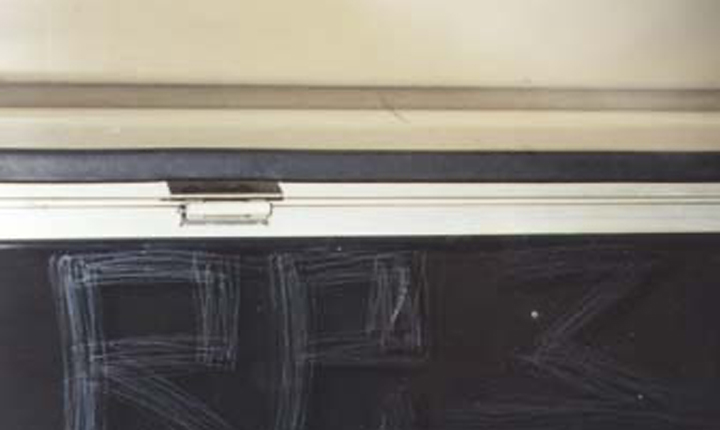SCRATCHITTI
In 1989 The MTA achieved its goal of a virtually graffiti free subway system. Or so they thought. With the introduction of shatter resistant windows and the displaced energy from the aerosol art (graffiti) movement the MTA found themselves in the midst of a new battle; scratchiti. With hopes of reducing the cost of replacing shattered windows the MTA began to install shatter resistant windows. These windows had a downside for the MTA. They were easily scratched. Soon thousands of names marred the windows of New York City subway cars. In the 1990s one would be hard pressed to find a clear window on the subway.
Scratchiti shares some things in common with graffiti, but is distinctly different. Beyond "getting your name around" scratchiti and graffiti do not share much in common. Scratchiti is much more loosely organized. Participants range from students to people who are killing some time by scratching their names. There are also those that are consistent and methodical in their efforts. RP3 and J ROC were kings of the F line in 1998. A broad range of tools are used in the implementation of scratchiti. Lava rocks, emery boards, knives and most commonly keys.
Scratchiti is not much more well received by aerosol artists as it is by the general public.The "getting your name around" aspect is applauded by some, but due to its nature complex artistic efforts are not much of an option, making it unappealing for many in the aerosol art culture. One advantage for it's creators is that it can not be erased.
Older aerosol artists and New Yorkers are familiar with the legendary scratchitist PRAY. During the late 1960s and early 1970s this word along with the phrase "Worship God" were scratched on thousands of support beams and telephone booths in subway stations. According to many this was the efforts of an old woman suggesting that society pray. PRAY was highly admired in the writing community for being so prolific. In the mid to late 1970s the appearance of this word dropped sharply. Many speculated that it was due to the death of the woman.
History Page
Reproduction in whole or in part without permission is prohibited.

